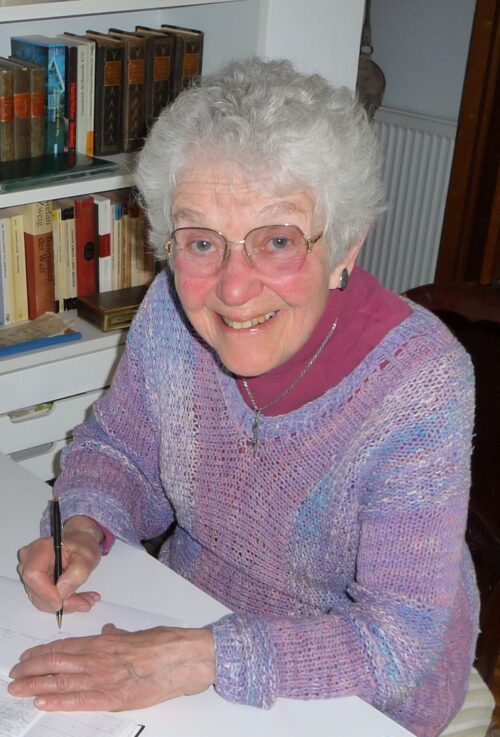Hans Georg Calmeyer, a German national, was posthumously recognized as a Righteous Gentile by Yad Vashem in 1992. But 28 years on, Yad Vashem’s decision to honor him as a savior of Jews during the Holocaust has been sharply called into question.
Hans Knoop, a reputable Jewish journalist from Holland who unmasked the Dutch war criminal Pieter Menten in 1976, has written a letter to Germany’s ambassador in the Netherlands claiming that Calmeyer’s wartime record is blemished and should be reexamined and that Germany should refrain from funding a museum named for him in the German town of Osnabruck.
Knoop has yet to receive a reply from the German government. But in the meantime, Yad Vashem — the Holocaust memorial, educational and research center in Jerusalem — is reportedly reviewing Calmeyer’s file.

This is a complicated and ambiguous case because Calmeyer simultaneously saved and doomed Dutch Jews during the Nazi occupation of Holland.
Born into an upper middle-class family 1903 in Osnabruck, Calmeyer was a lawyer who defended communists in court before the Nazi era. With their seizure of power in 1933, the Nazis forbade him to practice law, regarding him as a “politically unreliable” person who had engaged in “communist intrigues.”
Regardless of his left-of-center political views, Calmeyer was conscripted into the German army and participated in Germany’s invasion of Holland in 1940. A year later, he joined the Nazi occupation regime in an administrative capacity, tasked with reviewing the appeals of Dutch citizens who were registered as Jews but who claimed to be Christians.

This was no small matter. Two months before Calmeyer’s arrival on the scene, the 140,000 Jews of Holland had been ordered to register with the authorities. No one was exempted from this requirement, not even Jews of partial Jewish ancestry.
With the start of deportations in 1941, Jews of mixed ancestry, in particular, visited Calmeyer’s office in the hope of being reclassified as Christians. As Christians, they could avoid being deported to Nazi concentration camps in Poland.
According to Yad Vashem, Calmeyer understood that his job “afforded him the opportunity to help Jews. At the same time, Calmeyer also realized that he would have to act with the utmost care to avoid arousing any suspicion within the fiercely antisemitic environment in which he was working.”
Calmeyer’s willingness to assist Jews was rooted in his loathing of Nazism and his disapproval of the persecution of Jews, says Yad Vashem.
In support of applications from Jews trying to change their religious status, Calmeyer accepted baptismal certificates, real or forged, and was apparently willing to gloss over the manufactured stories of some applicants who falsely claimed that one of their parents had been a Christian.
Through such bureaucratic maneuvers, Calmeyer is said to have saved 2,900 Dutch nationals, or roughly two-thirds of the applications that landed on his desk.
Laureen Nussbaum, whose maternal grandmother was a Christian, was among those rescued by Calmeyer. A German Jew born in Frankfurt, she and her family fled to Holland. After World War II, she and her husband immigrated to the United States, where she became a professor of German language and literature at Portland State University.
She wrote a book about the Nazi occupation of Holland, Shedding Our Stars: The Story of Hans Calmeyer and How He Saved Thousands of Families Like Mine, and it was published in 2019.

In a piece for BookBub, an online magazine, she wrote: “My maternal grandmother was not Jewish. We had heard that the German official in charge of ‘dubious cases,’ Hans Calmeyer, was open to requests for reclassification — if a person could make a good case why he or she should not be registered as a Jew. My grandmother concocted a plausible story, and in the nick of time my mother, my sisters, and I could shed our yellow stars and blend in again with the rest of the population. My father, as a partner in a ‘privileged mixed marriage,’ had to keep wearing his Star of David, but he was not deported.”
Newly discovered documents and testimonies, however, reveal that Calmeyer arbitrarily declined legitimate appeals by more than 1,000 applicants, the vast majority of whom were sent to concentration camps.
Femma Fleijsman, a Holocaust survivor whose father was a Christian, claims that Calmeyer deliberately listed her as Jewish, thereby consigning her to the Bergen-Belsen camp.
Petra van den Boomgaard, a historian at Utrecht University in Holland, wrote a doctoral dissertation on Calmeyer in which she portrayed him an an ambivalent figure. When he denied racial reclassification requests, he was fully aware that the rejected applicants had been placed in peril. But if he had rebelled against the racist system that employed him, she added, he would have lost his ability to be of help to anyone.

Calmeyer, still living in Holland after the war, was imprisoned for more than a year, charged with having been an important cog in the Nazi machinery of death. Returning to Germany, he resumed his legal career, working on reparation cases involving victims of Nazism. He died in 1972.
As Hans Knoop suggests, Calmeyer was no saint. But the fact remains that he was instrumental in saving the lives of nearly 3,000 people.
